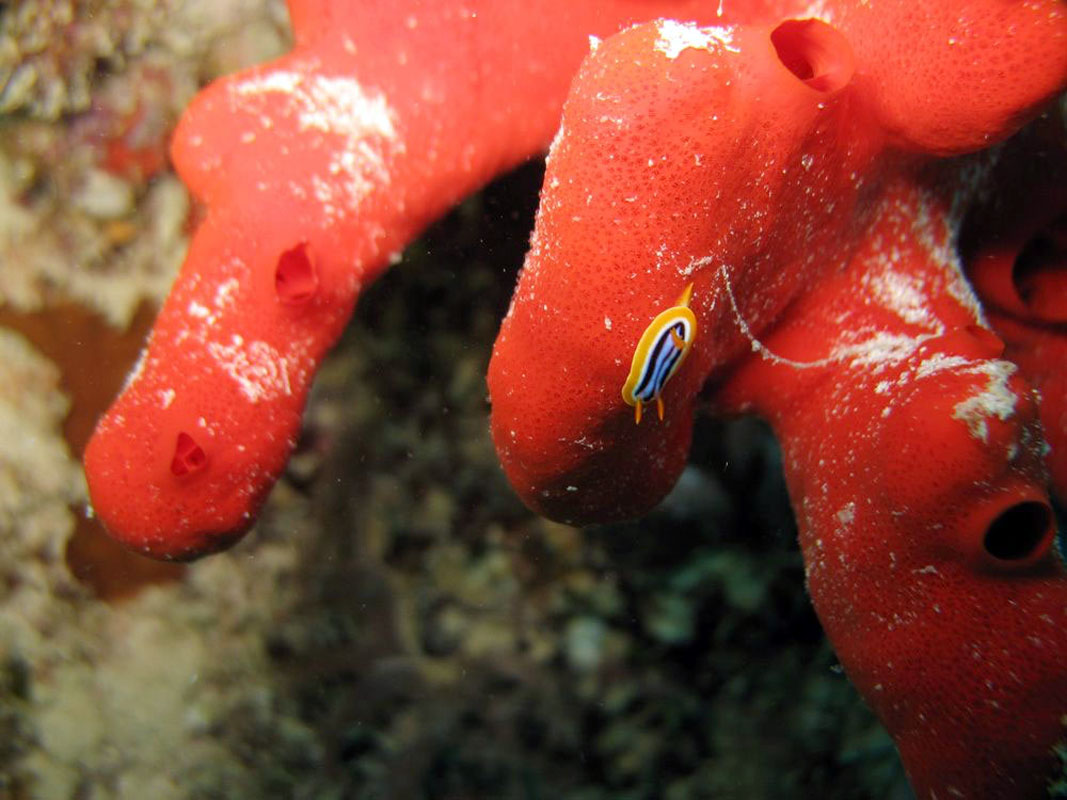Scope: The phylum Porifera (sponges) consists more than 9,000 described species [1], and a vast number of undescribed or yet undiscovered species [2]. The Sponge Barcoding Project (SBP) aims to cover all sponge taxa, from classes Demospongiae, Hexactinellida, Calcarea and Homoscleromorpha, and ranging in habitat from the marine intertidal to the deep-sea, as well as freshwater. Obtaining DNA-signature sequences will provide a platform from which more extensive sampling can be directed. Recently described type specimens curated in associated museums are barcoded and supplemented with unequivocally identifiable taxa, particularly holotypes. Additional material collected by individual groups involved in the SBP and are taxonomically identified by an expert before released as reference. The Sponge Barcoding Database (
SBD; or see 'Data' button) is the prime access point for DNA signature sequences together with information on conventional morphological taxonomic characters of sponges. This unique combination of sponge-specific conventional taxonomic information and their DNA signature sequences is crucial for the use on sponges and the distinguishing feature to all other DNA databases.
Purpose: Porifera constitute the oldest extant animal phylum and are notoriously difficult to identify. However, as a group they are highly diverse, ecologically important [3,4] and of significant commercial importance to the pharmaceutical and biomaterials industry. Sponge barcodes provide a set of indispensable tools for the identification of sponge species, and greatly aid taxonomists, ecologists, and will enhance the discovery of drug-producing species.
Background: This is the first worldwide barcoding project on any non-bilaterian taxon, and covers the complete taxonomic range of Porifera. Several smaller pilot studies have recently been conducted independently, with various levels of resolution and success [5]. Therefore, a concerted effort is now timely, and warrants comprehensive, phylum-wide coverage [6,7].
References:
[1] Van Soest RWM et al. (2018). World Porifera database. Accessed at http://www.marinespecies.org/porifera on 2018-07-01.
[2] Van Soest RWM et al. (2012). PLoS ONE, 7:e35105. doi: 10.1371/journal.pone.0035105.t003
[3] Bell JJ (2008). Estuar Coast Shelf S, 79:341–353.
[4] de Goeij JM et al. (2013) Science, 342:108–110.
[5] Duran S, Rützler K (2006). Mol Phylogenet Evol, 40:292–297.
[6] Wörheide G et al. (2007). Porifera research: Biodiversity, innovation and sustainability 123–128.
[7] Wörheide G, Erpenbeck D (2006). J Mar Biol Ass UK, 87:1629–1633.






